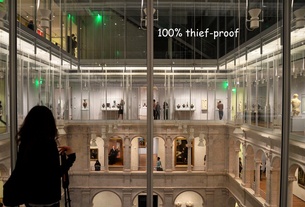In making the decision to divest from tobacco companies, then-president Derek C. Bok expressed justification on a social justice platform.
The move, he said, according to a New York Times article at the time, “was motivated by a desire not to be associated as a shareholder with companies engaged in significant sales of products that create a substantial and unjustified risk of harm to other human beings.''
{shortcode-6a801dacb024707d2dde69f88feb9b03c8aa6a56}
In the view of today’s advocates for restricting investment practices, the academic and ethical mission of universities in general cannot be separated from the mission of HMC.
“Ultimately, as an educational institution, Harvard has a unique role as a thought leader and as an action leader,” says Sam F. Wohns ’14, a co-founder of the Responsible Investment at Harvard Coalition, a group that has recently expressed concerns about HMC-owned timberlands in Argentina—accusations that Wiltshire has repudiated.
“We want to make sure Harvard is upholding its role as a thought and action leader,” Wohns says.
Furthermore, some argue that the unparalleled scope and size of the endowment give Harvard greater leverage to promote ESG causes as an influential shareholder—a role that Faust agreed should be used in a socially upstanding way in her open letter against divestment.
HMC is unique among university endowments in its diversification into alternative assets. As of 2013, according to HMC’s annual report, 13 percent and 10 percent of its assets were allocated to natural resources and real estate, respectively. According to many experts, because it owns most of these assets in full and thus has complete control over management decisions, Harvard has more of an ability to make a direct and immediate impact on ESG standards.
This status stands in contrast to smaller and more traditional endowments with a much larger allocation toward traditional stocks and bonds, which provide the investor with a claim to, at most, a rather insignificant portion of control over its company.
Marcie Hawkins Smith, executive director at the Responsible Endowments Coalition, suggests that Harvard holds considerable influence in the sphere of endowment investment on account of the unparalleled scale of its endowment, which is larger than the GDP of several dozen sovereign nations.
“The potential impact is really huge, if you’re talking about Harvard doing anything with respect to responsible investing,” Hawkins Smith said. “That has incredible ripple effects, not just within education but also across the pension fund space and across the foundation endowment space.”
TOEING THE LINE
At a time when Harvard’s endowment has the potential to shape national discussion on a contentious environmental issue, some say the number of voices at the table is small—smaller, even, than HMC claims.
According to Pedicini, HMC incorporates feedback from the broader university community through two main avenues: first, through the Advisory Committee on Shareholder Responsibility and the Corporation Committee on Shareholder Responsibility, which together form an oversight system created by HMC in 1974. The second channel of engagement, Pedicini says, is the the informal option open to student groups of sitting down with Pedicini herself.
As has been the case since the body’s inception four decades ago, the ACSR is tasked officially with making recommendations on proxy votes that come up for companies included in HMC’s public equity portfolio, which often, although not always, take up ESG concerns.


